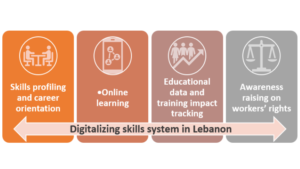Unemployment hinders a country’s economic growth. For a world facing a population of 10 billion by 2055 when more than 95% of this growth will happen in the low and middle-income countries, tackling the unemployment issue in developing economies can ensure a steady and sustainable growth globally. In 2020, over 200 million young people were unemployed. Youth unemployment has posed a major challenge to regional and international development and personal prosperity. Among the countries and regions facing this challenge, East Africa feels a more urgent need to overcome the problem of youth unemployment, which affects 60% of its population.
For decades, development economists have examined different methods and interventions to address this issue in the context of labour market performance. They often ask two questions. On the supply side, why don’t workers acquire the skills that can help them secure jobs? On the demand side, what prevents firms from hiring these workers? In November 2020, a paper named “Tackling Youth Unemployment: Evidence from a Labor Market Experiment in Uganda” was released to address these very questions.
A Randomised Controlled Trial
Researchers of the study carried out a randomized controlled trial (RCT) in 2012 to compare demand- and supply-side policies to tackle youth unemployment. The experiment tracks 1700 workers and 1500 firms over four years to compare the effect of offering workers either vocational training (VT) or firm-provided training (FT) for six months. Both interventions are designed to improve skills, but they do so by relaxing different constraints. Subsidized VT may help workers overcome credit market imperfections that prevent them from investing in skills or imperfect knowledge regarding the return to different skills. What’s more, VT usually provides workers with certified skills, which reduces adverse selection and enhances worker labour mobility. Subsidized FT helps firms overcome credit market imperfections which prevent them from incurring the costs of hiring and training workers, or of learning about the ability and match quality of inexperienced workers.
To make sure the intervention was adequately targeted, the RCT selected disadvantaged youth aged 20 on average.
The Findings
The study found that both VT and FT workers: i) have gained sector-specific skills and significantly improved their employment rates; ii) experience improvements in an index of labour market outcomes, that combines employment, total labour supply, and earnings. However, VT and FT workers saw different treatment effects, with VT ones materializing more slowly but lasting longer than those for FT workers, both in terms of employment and earnings. The study also revealed that when unemployed, it is a lot easier for VT workers to find work again thanks to the certifiability of their skills. Also, in steady state (three years post-intervention), the increase in annual earnings of VT workers is higher than that of FT workers.
According to the study’s findings, tackling youth unemployment by skilling youth using vocational training prior to labour market entry is an effective tool, one that appears to be more effective than incentivizing firms to hire and train young labour market entrants through wage subsidies.
The Learning and Knowledge Development Facility (LKDF)
UNIDO’s LKDF is a platform by UNIDO that promotes industrial skills development among young people in emerging economies. Working with the private sector through Public-Private Development Partnerships, the LKDF supports the establishment and upgrading of local industrial training academies to help meet the labour market’s increasing demand for skilled employees, ultimately contributing to inclusive and sustainable industrial development.
Source:https://lkdfacility.org/news/vocational-training-helps-tackle-youth-unemployment-and-here-is-the-proof/






